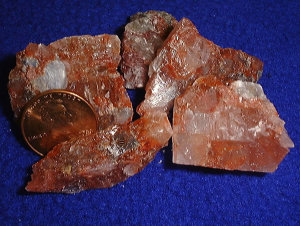![]() The Pacific War Online Encyclopedia
The Pacific War Online Encyclopedia
|
| Previous: Portugal | Table of Contents | Next: Potsdam Declaration |

U.S. Geological Survey. Via Wikimedia Commons
Potash is potassium carbonate, K2CO3. The potassium it contains is an essential nutrient for green plants, particular dry grain, and the animals and humans that feed on them, making potash an important ingredient in agricultural fertilizers. Potash is also used to manufacture soap and high-quality glass, although there are substitutes, such as soda ash (sodium carbonate), for most of the non-agricultural uses.
Potash was originally produced from wood ashes, which
were leached to extract a very impure form of potassium carbonate. As
forests were destroyed in Europe, production shifted to the United
States, where the very first patent issued by the U.S. government was
for a more efficient process for extracting potash from wood ashes.
However, in the mid-19th century, massive beds of potassium salts were
discovered in Germany. Mined
potash rapidly displaced potash from wood ash on the world market.
In the years prior to the First World War, the U.S. imported most of its potash from Germany. This source was cut off with the outbreak of war, and the United States was forced to develop its own potash resources. By the end of the war, the U.S. had become self-sufficient in potash while simultaneously greatly expanding its use. Much of the production came from sources in the western United States, including massive underground beds in New Mexico and brine lakes in western Utah (Salduro) and southern California (Trona). Potash mining from brine lakes also produced very light elements, such as lithium and boron, as byproducts. These had only minor uses until after the war. Potassium was thus not a limiting resource for the Americans.
Russia produced considerable potash in the Ural Mountains, which was badly needed in Britain. This resource took a roundabout journey, shipped by rail to the Soviet Far East and from there across the northern Pacific to Canada, by rail to the Atlantic coast, and from there by ship to Britain.Japan had no indigenous sources of potassium other than wood ashes
and seaweed, which fell far short of requirements. Embargoes in 1941
cut imports by two-thirds and the supply all but evaporated after war
broke out. Although potash shortages had little effect on rice production, they contributed to the precipitous decline in dry grain production in Japan during the war years.
References
U.S.
Geological Survey (accessed 2008-7-11)
The Pacific War Online Encyclopedia © 2008, 2011-2012 by Kent G. Budge. Index